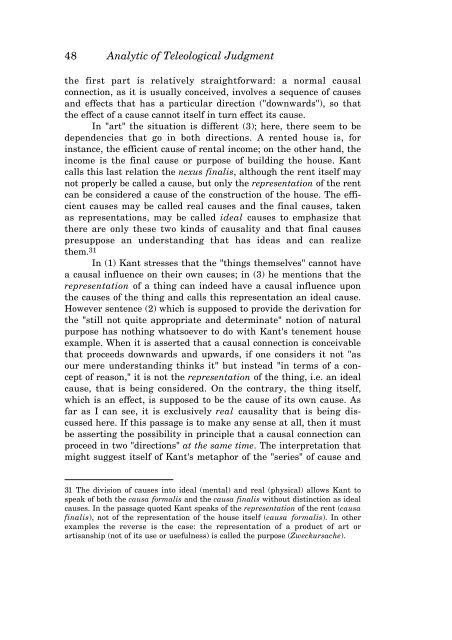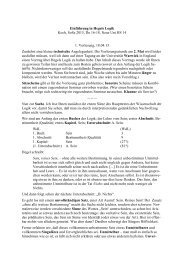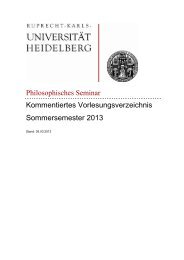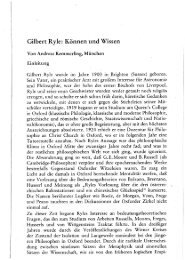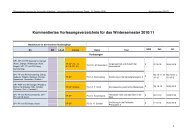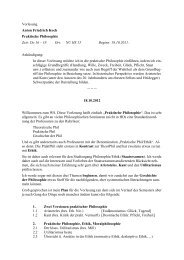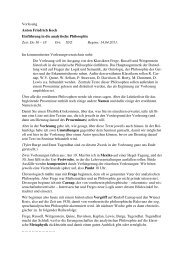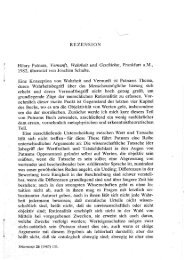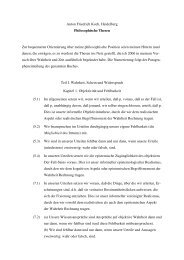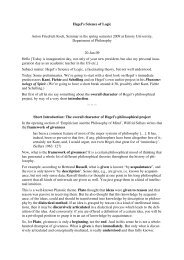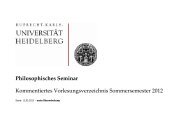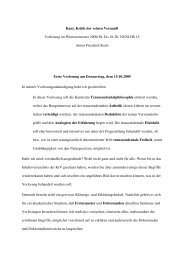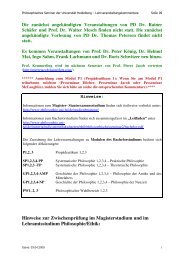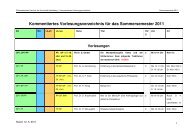KANT'S CRITIQUE OF TELEOLOGY IN BIOLOGICAL EXPLANATION
KANT'S CRITIQUE OF TELEOLOGY IN BIOLOGICAL EXPLANATION
KANT'S CRITIQUE OF TELEOLOGY IN BIOLOGICAL EXPLANATION
You also want an ePaper? Increase the reach of your titles
YUMPU automatically turns print PDFs into web optimized ePapers that Google loves.
48 Analytic of Teleological Judgment<br />
the first part is relatively straightforward: a normal causal<br />
connection, as it is usually conceived, involves a sequence of causes<br />
and effects that has a particular direction ("downwards"), so that<br />
the effect of a cause cannot itself in turn effect its cause.<br />
In "art" the situation is different (3); here, there seem to be<br />
dependencies that go in both directions. A rented house is, for<br />
instance, the efficient cause of rental income; on the other hand, the<br />
income is the final cause or purpose of building the house. Kant<br />
calls this last relation the nexus finalis, although the rent itself may<br />
not properly be called a cause, but only the representation of the rent<br />
can be considered a cause of the construction of the house. The efficient<br />
causes may be called real causes and the final causes, taken<br />
as representations, may be called ideal causes to emphasize that<br />
there are only these two kinds of causality and that final causes<br />
presuppose an understanding that has ideas and can realize<br />
them. 31<br />
In (1) Kant stresses that the "things themselves" cannot have<br />
a causal influence on their own causes; in (3) he mentions that the<br />
representation of a thing can indeed have a causal influence upon<br />
the causes of the thing and calls this representation an ideal cause.<br />
However sentence (2) which is supposed to provide the derivation for<br />
the "still not quite appropriate and determinate" notion of natural<br />
purpose has nothing whatsoever to do with Kant's tenement house<br />
example. When it is asserted that a causal connection is conceivable<br />
that proceeds downwards and upwards, if one considers it not "as<br />
our mere understanding thinks it" but instead "in terms of a concept<br />
of reason," it is not the representation of the thing, i.e. an ideal<br />
cause, that is being considered. On the contrary, the thing itself,<br />
which is an effect, is supposed to be the cause of its own cause. As<br />
far as I can see, it is exclusively real causality that is being discussed<br />
here. If this passage is to make any sense at all, then it must<br />
be asserting the possibility in principle that a causal connection can<br />
proceed in two "directions" at the same time. The interpretation that<br />
might suggest itself of Kant's metaphor of the "series" of cause and<br />
31 The division of causes into ideal (mental) and real (physical) allows Kant to<br />
speak of both the causa formalis and the causa finalis without distinction as ideal<br />
causes. In the passage quoted Kant speaks of the representation of the rent (causa<br />
finalis), not of the representation of the house itself (causa formalis). In other<br />
examples the reverse is the case: the representation of a product of art or<br />
artisanship (not of its use or usefulness) is called the purpose (Zweckursache).


